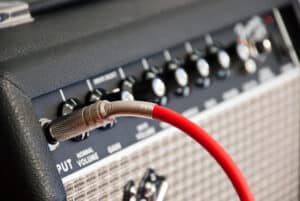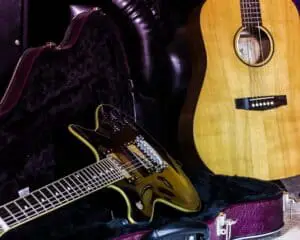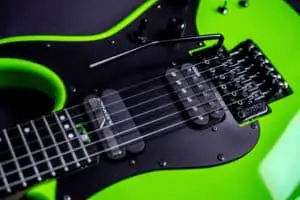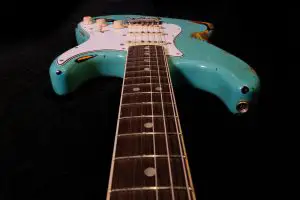
Learning and remembering guitar string names can be difficult for many beginner guitarists. Some even try to skip the process altogether, but they still go back to it when they reach an intermediate level.
Each guitar string has a name, and knowing the names offhand can fast-track your guitar learning journey. So what are the guitar strings called?
Starting from the thickest or sixth string, the guitar strings are named E, A, D, G, B, E, or 6, 5, 4, 3, 2, 1. The letter names are more common, and you’ll often come across them when learning to play the guitar, whether in classes or online.
Continue reading to know more about how guitars evolved to have six strings and everything you need to know about learning and remembering these strings.
Brief History of the Guitar
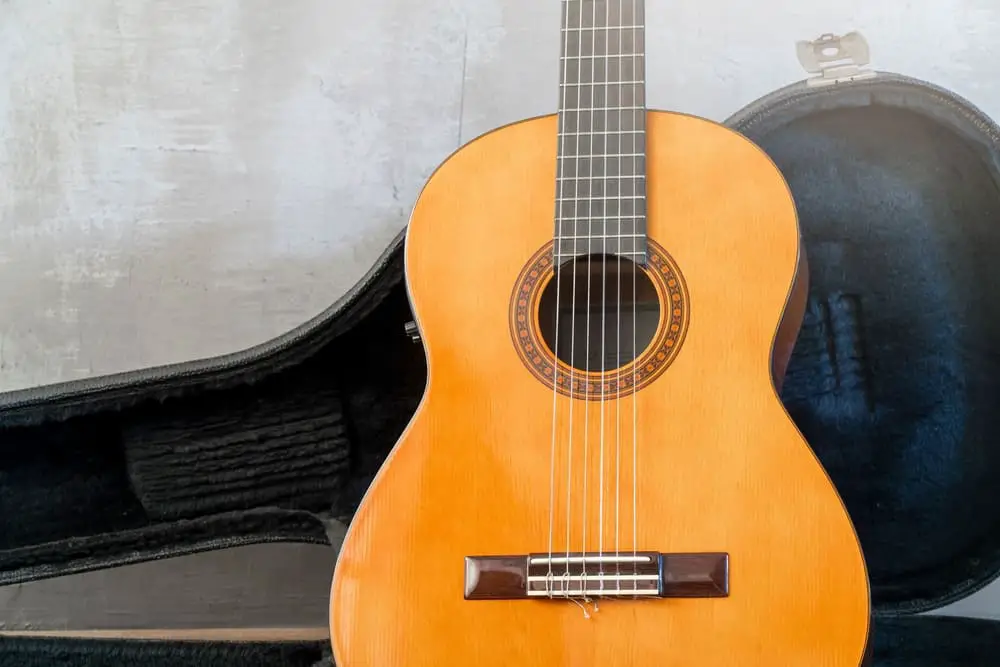
Before the guitar took the shape we now recognize today, it looked like an ancient banjo. This was thousands of years ago, and since then, the early guitar evolved to look like a lute, a vihuela (a flat-back lute), then the nylon-stringed Spanish guitar.
Believe it or not, the guitar started with four strings, and then the number gradually increased to six. The demand for guitars has only increased over centuries; hence, more changes have been made.
For example, luthiers increased the guitar body size and changed the bracing system to hold louder and sturdier steel strings to make the instrument louder.
The invention of amps, pickups, pedals and other guitar equipment shortly followed. You may be wondering why guitar strings are tuned the way they are. Although there’s no one answer to this question, the most popular answer is that it’s a musical necessity.
What Are the Guitar Strings Called?

The EADGBE is the standard tuning used by the majority of guitar players.
- The thickest or sixth string is the E. Since there are two E strings, it’s often called the low E string. If you want to sound like a pro, you can call it the E2 string.
- The fifth guitar string is called A or A2 string. It rests right after the low E string.
- The fourth string is called D or D3.
- The third guitar string is called the G string. Also called the G3 string, it’s after the D string.
- The second string, B, has the second-highest pitch on the guitar. Guitarists say it’s the hardest to tune.
- Finally, the first guitar string with the highest pitch is called the E string. It’s the high E string, also known as E6.
How To Remember Guitar String Names
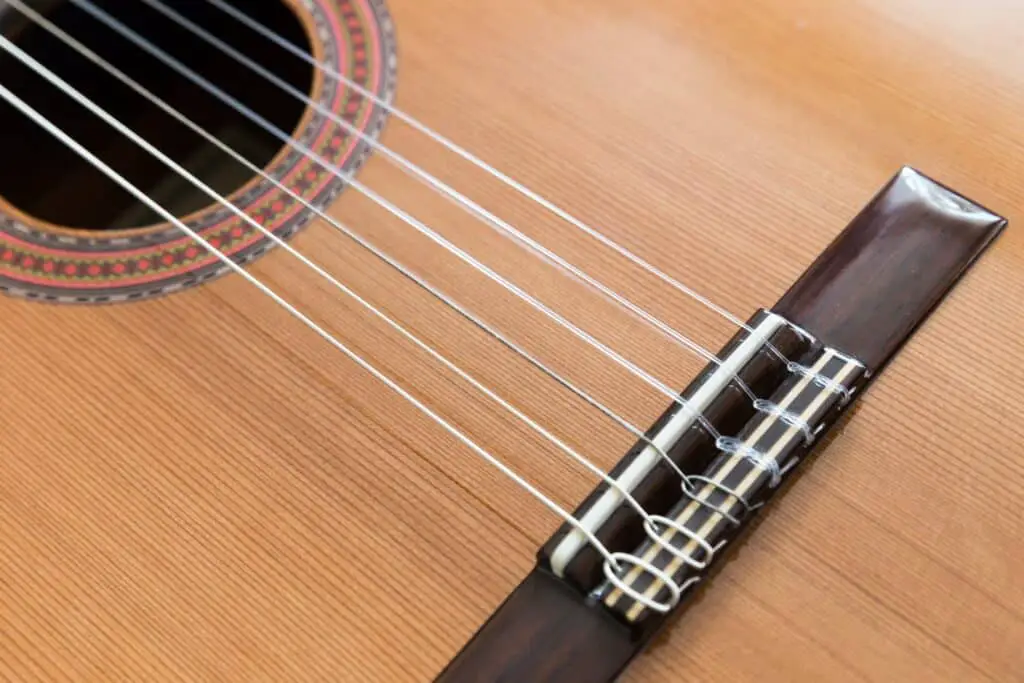
You now know the names of the guitar strings, but remembering them is where most people fail. The best way to remember is to come up with an acronym or memorable phrase.
The most common EADGBE acronyms are:
- Eddie Ate Dynamite, Good Bye Eddie
- Elephants And Donkeys Grow Big Ears
- Easter Bunny Gets Drunk After Easter
- Eat All Day, Get Big Easy
- Every Amateur Does Get Better, Eventually
Pick any of these acronyms you’re sure you can easily remember, or you can even make up your own. The more ridiculous it sounds, the faster you’ll remember.
Why Remember String Names?

What’s the fuss about guitar string names, and why does everyone feel it’s so important to remember them?
Well, you need to know guitar string names to tune your guitar. Of course, tuning apps or physical tuners can help, but they won’t always tell you if you’re tuning the wrong string. It’s your job to know the string names to know the correct string to tune.
The cherry on top, guitar tabs, lessons, and music theory use guitar string names and numbers interchangeably. So if you want to understand your guitar lessons, you need to know them.
Top and Bottom Strings
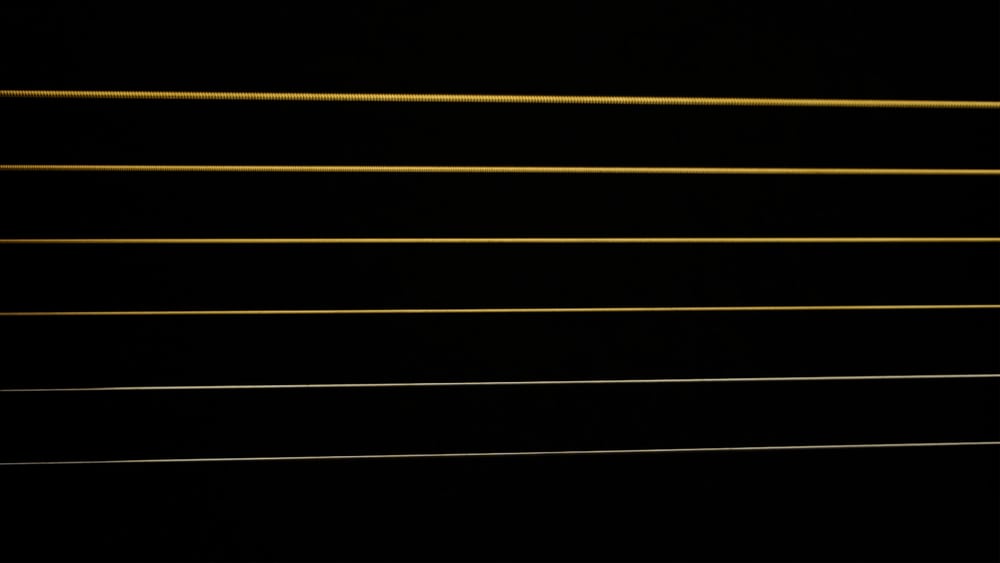
In your guitar learning journey, you’ll often come across the phrase “top and bottom strings.”
The thinnest or first string is what people call the top string. However, it’ll actually be at the bottom when you sit the guitar across your body.
Conversely, the thinnest or sixth string is the bottom string in guitar lingo. The best way to remember which one is top or bottom is to think of the notes instead of the strings’ physical positions.
The bottom or sixth string sounds very low compared to the high-pitched sound of the top string.
What Does an Open String Mean?

When you’re not pressing on a string, you call it open. So if you’re playing any of the guitar strings without pressing on the frets, you’re playing an open string.
The bottom string is the lowest open note you can play, but it’s not the lowest note on the guitar. You can go lower if you’re pressing down on a fret.
However, when you do press down on the frets, you don’t call them closed strings. Don’t ask for an explanation. It’s just that way in the guitar world.
Can You Use Other Guitar Tunings?
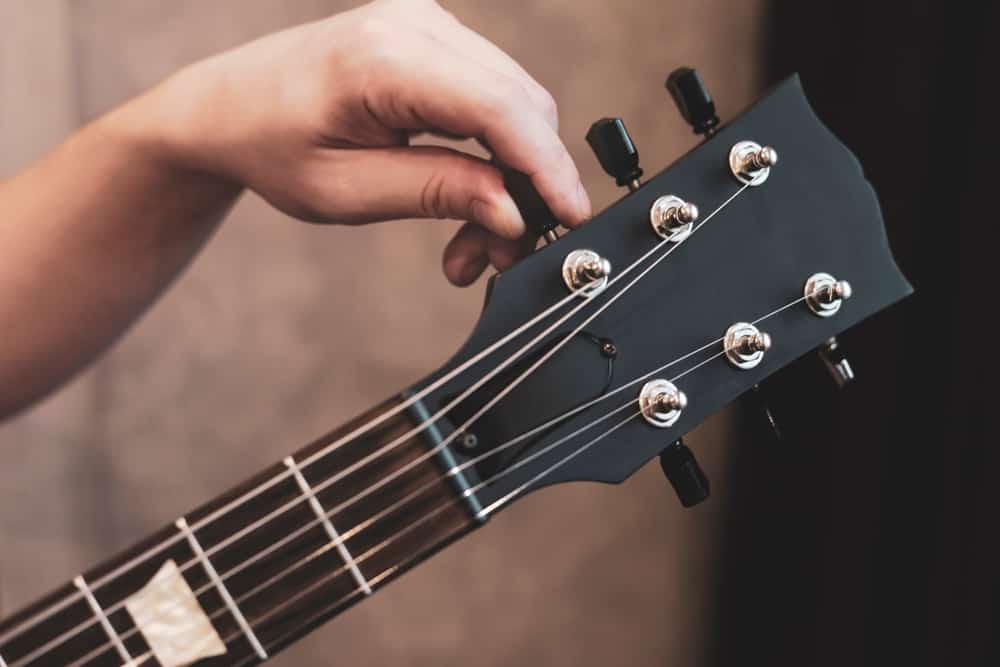
Every beginner guitarist must learn to play in the standard EADGBE tuning, but you shouldn’t stop there. Many famous guitarists have used alternate tunings to sound different.
Alternate tunings can help you change chords easily and play in a different key. Once you get the hang of your new tuning, you’ll sound unique. Ensure you have a tuner close, so you can always come back to the standard tuning after experimenting.
Takeaway
Remember to use acronyms or songs to remember the guitar string names. After you memorize them, you’ll be able to learn and play the guitar much more easily.

